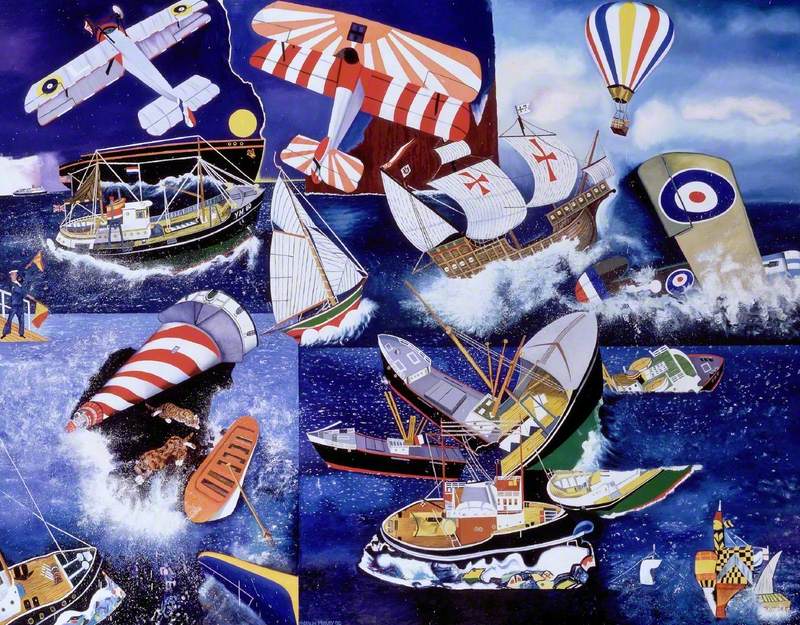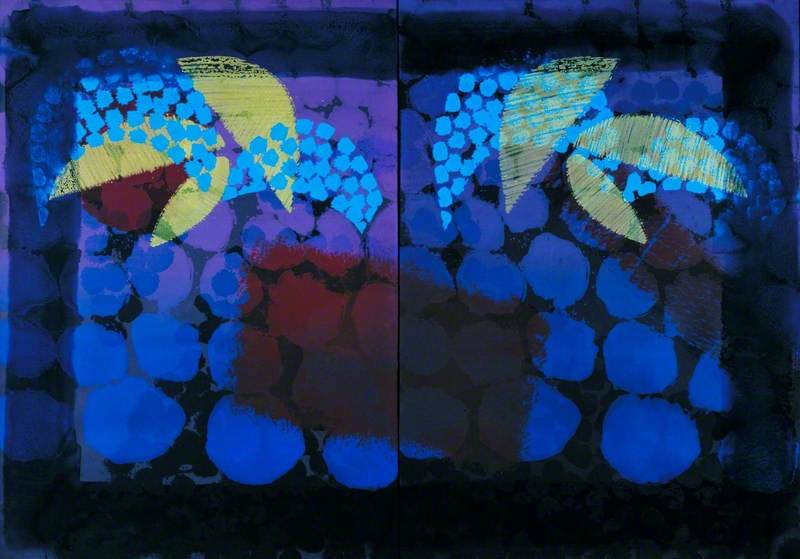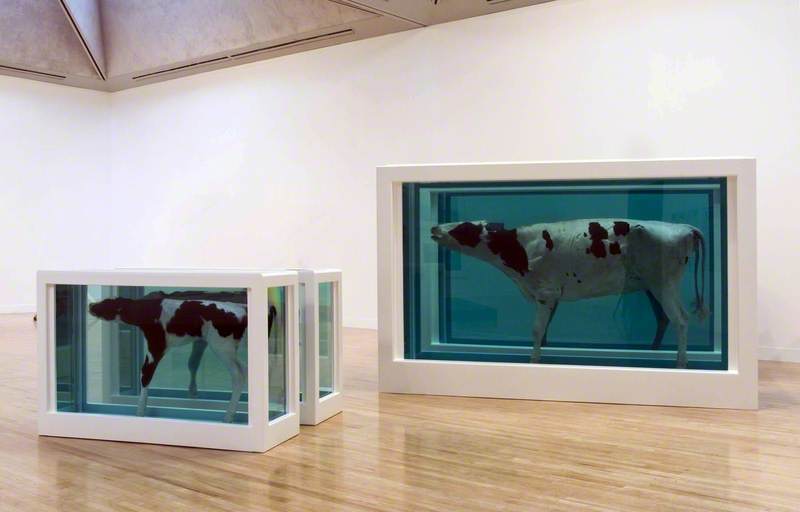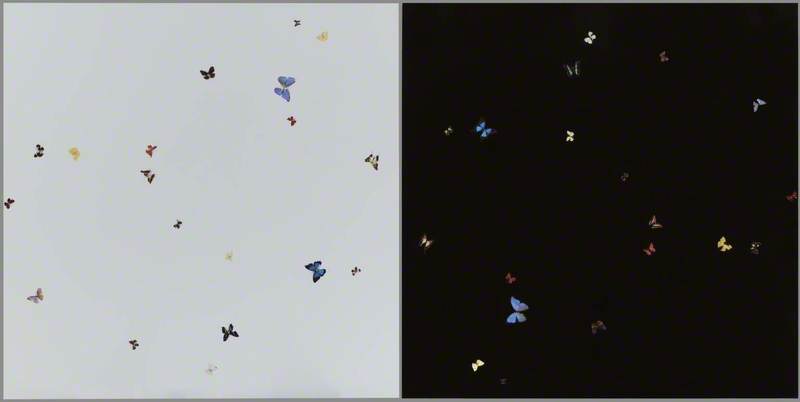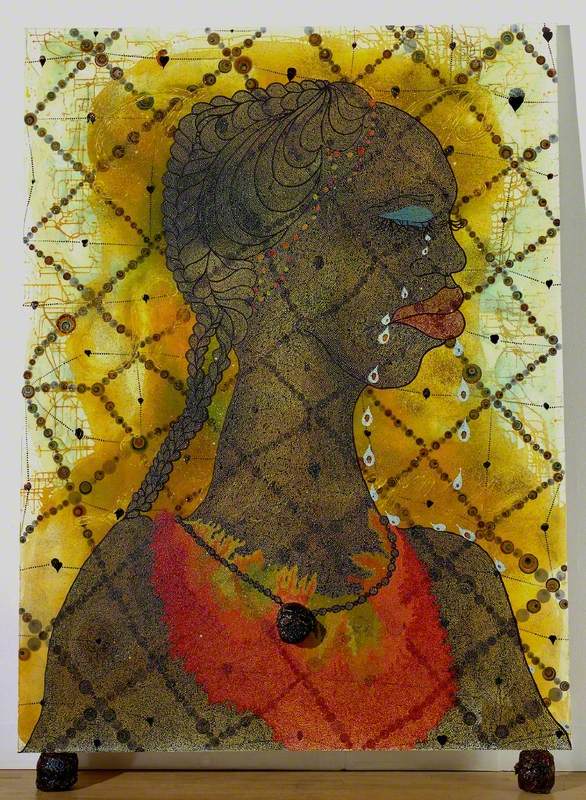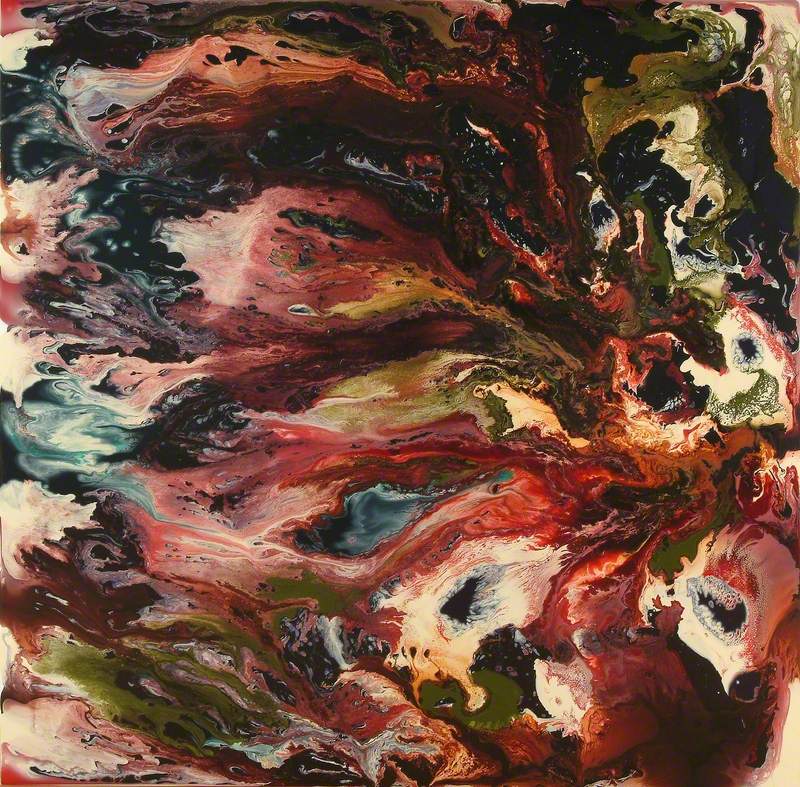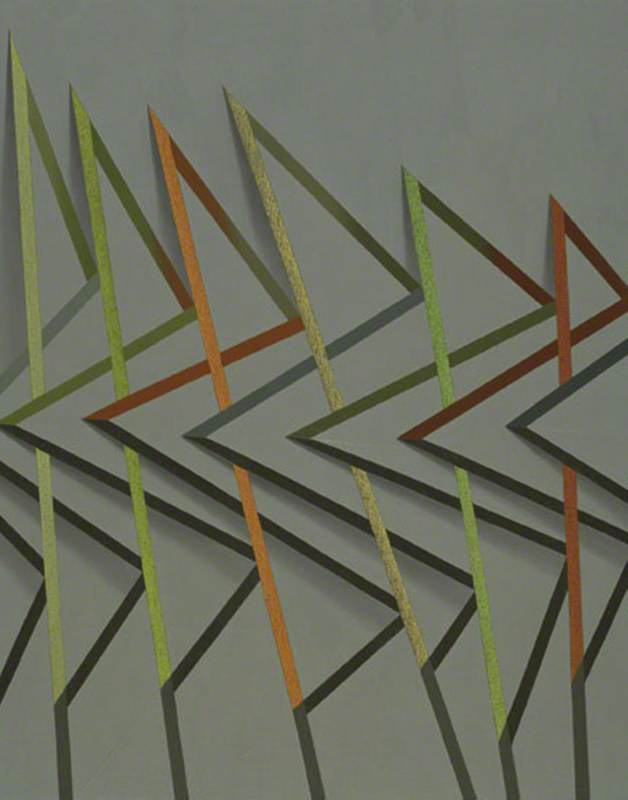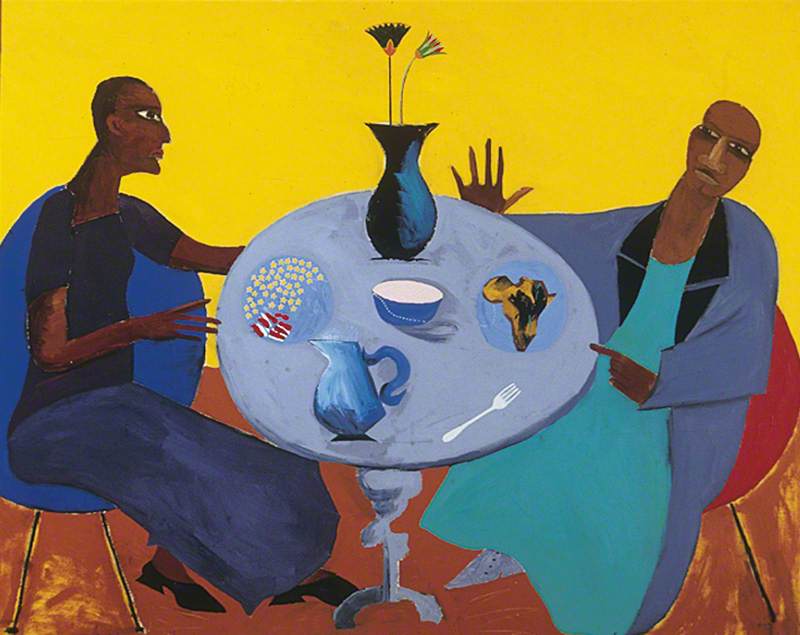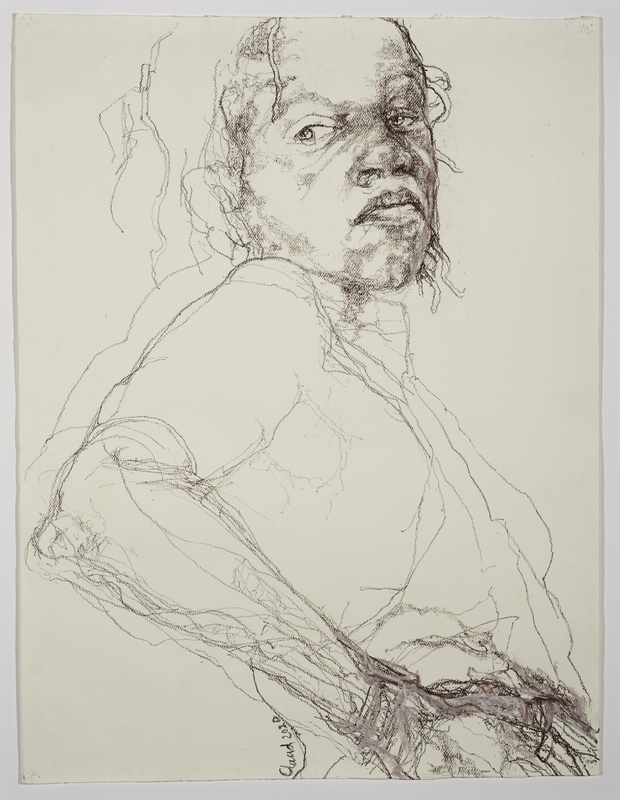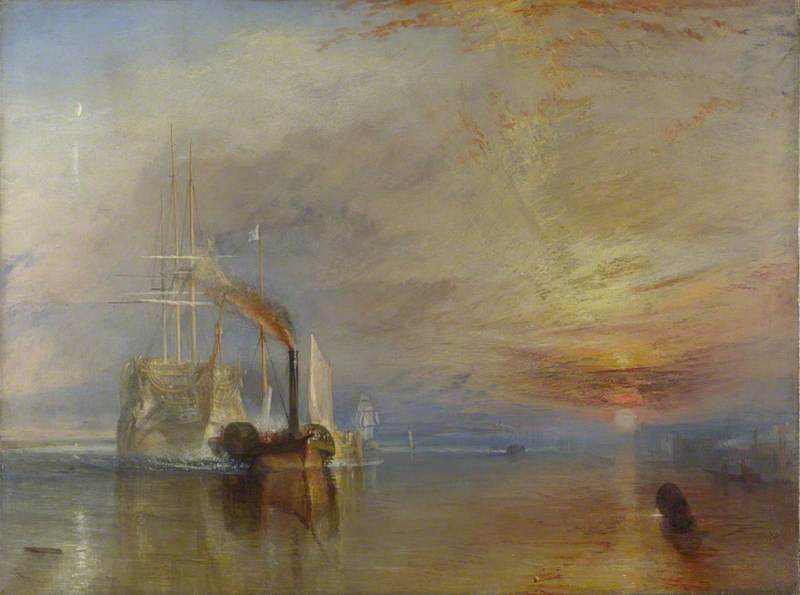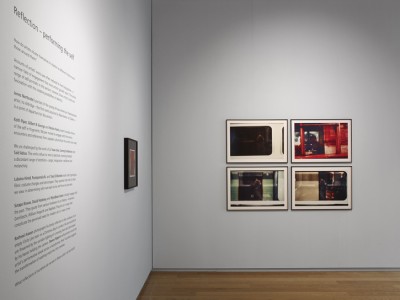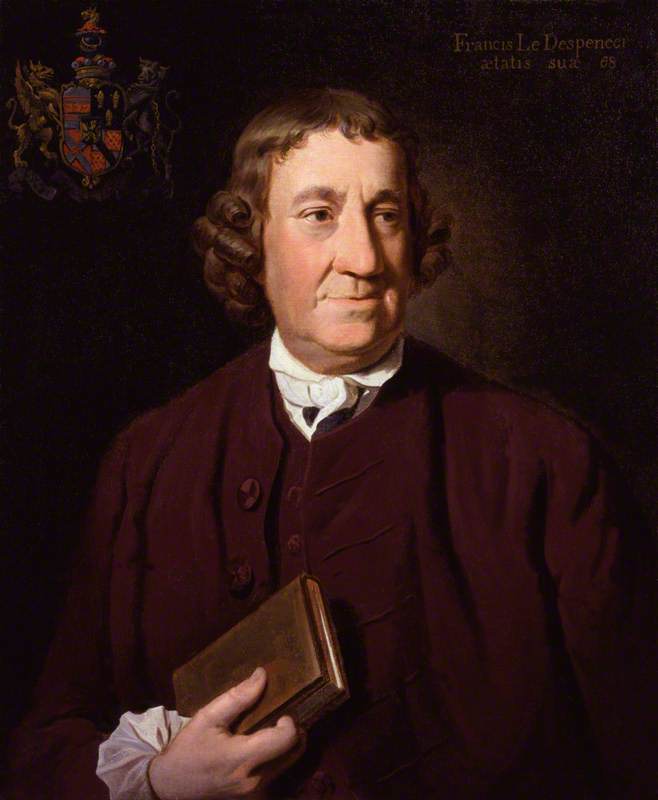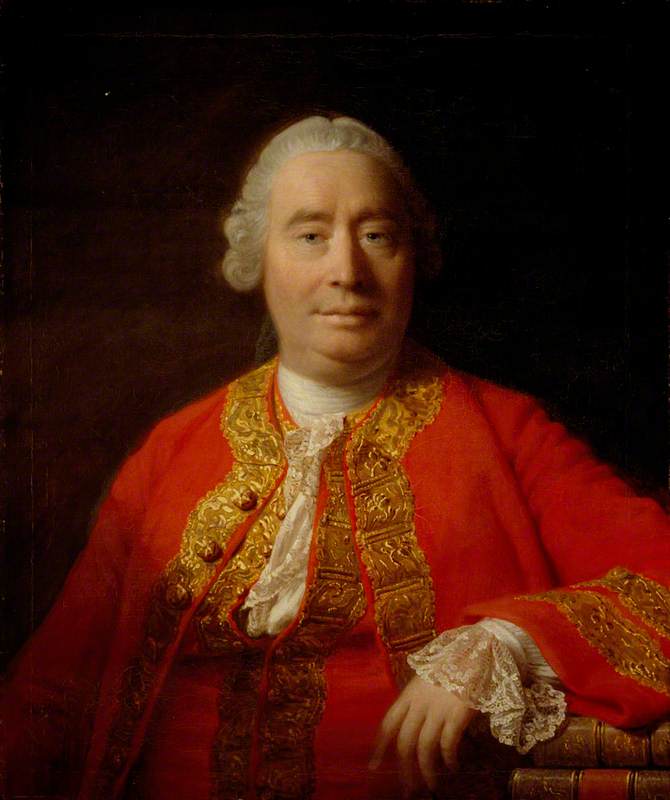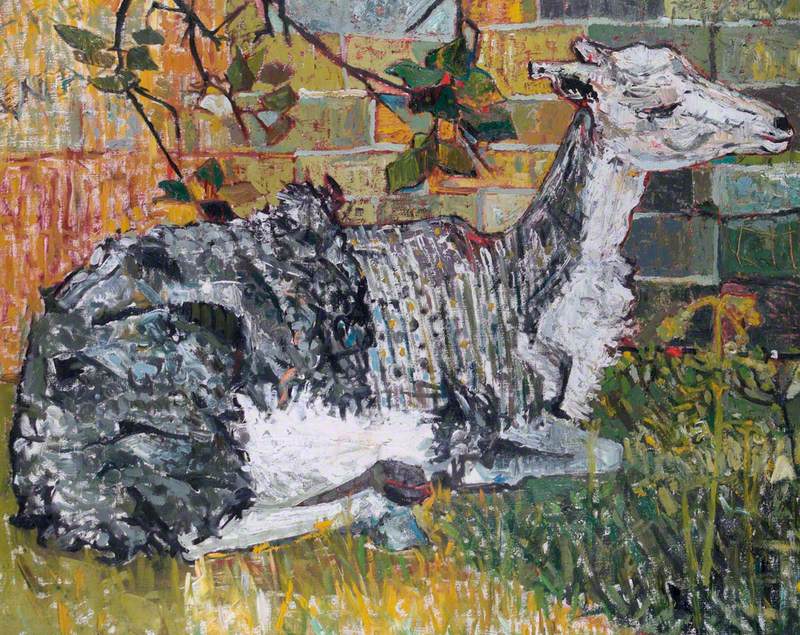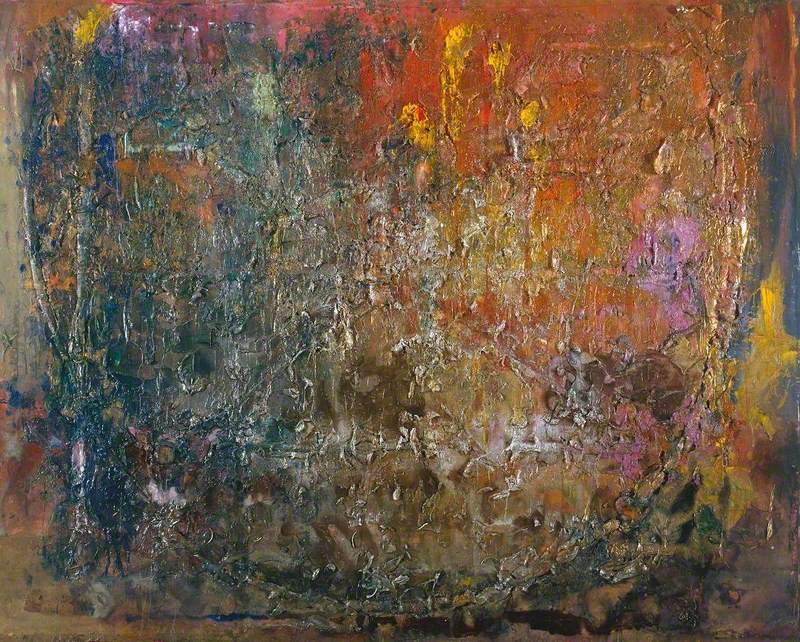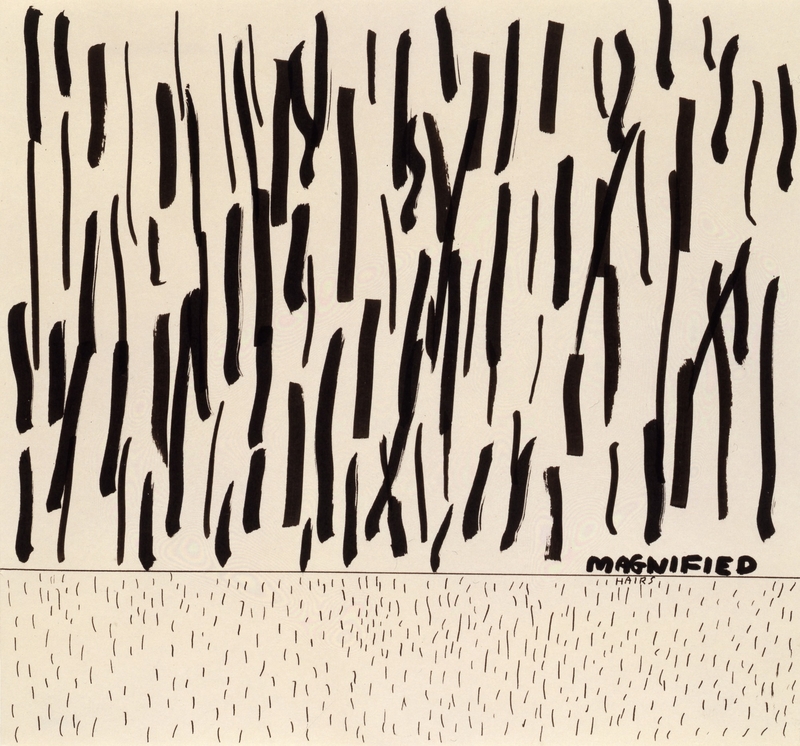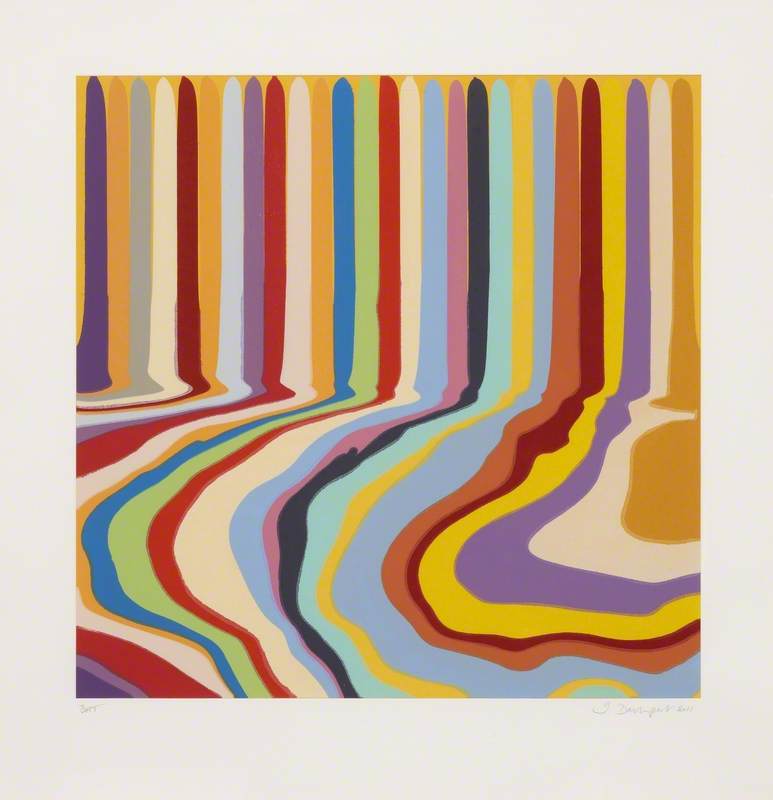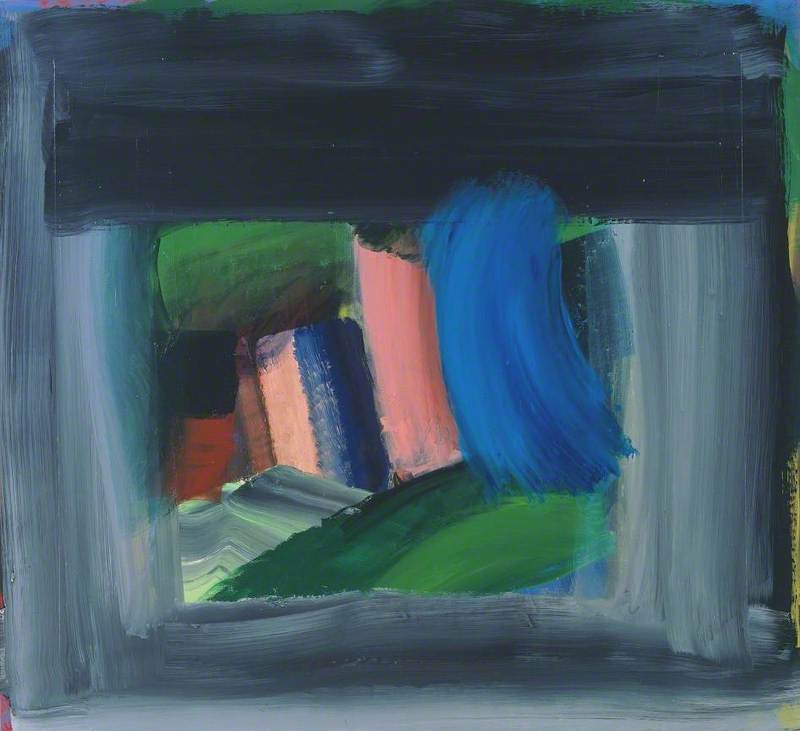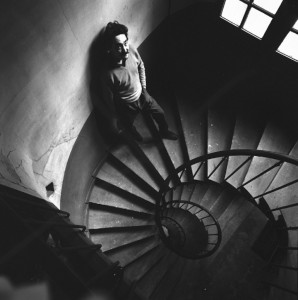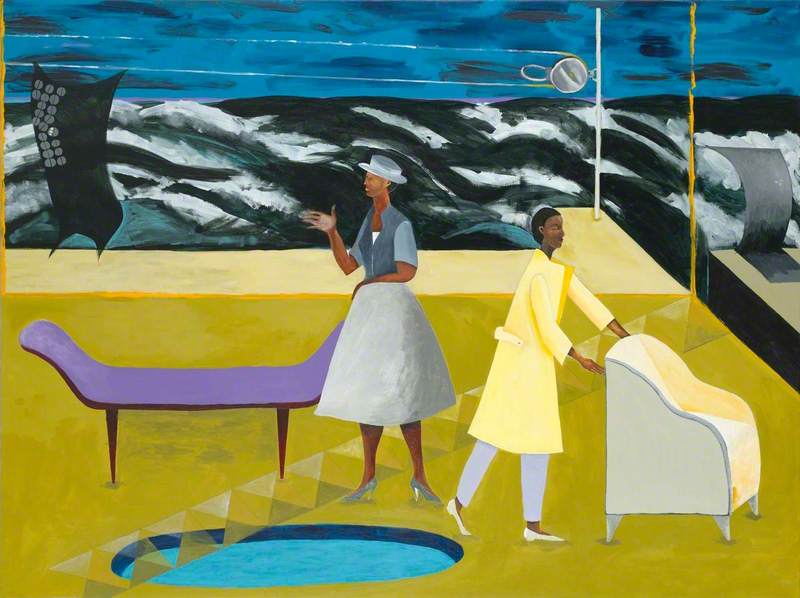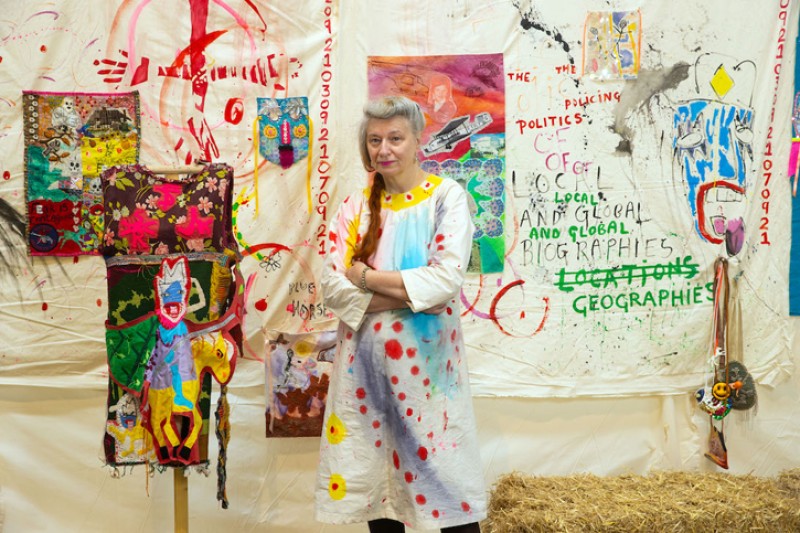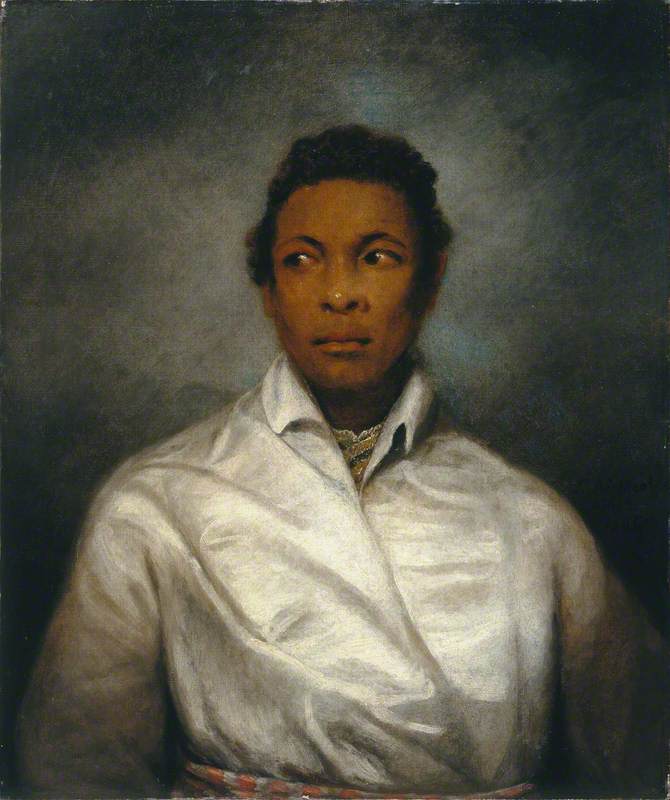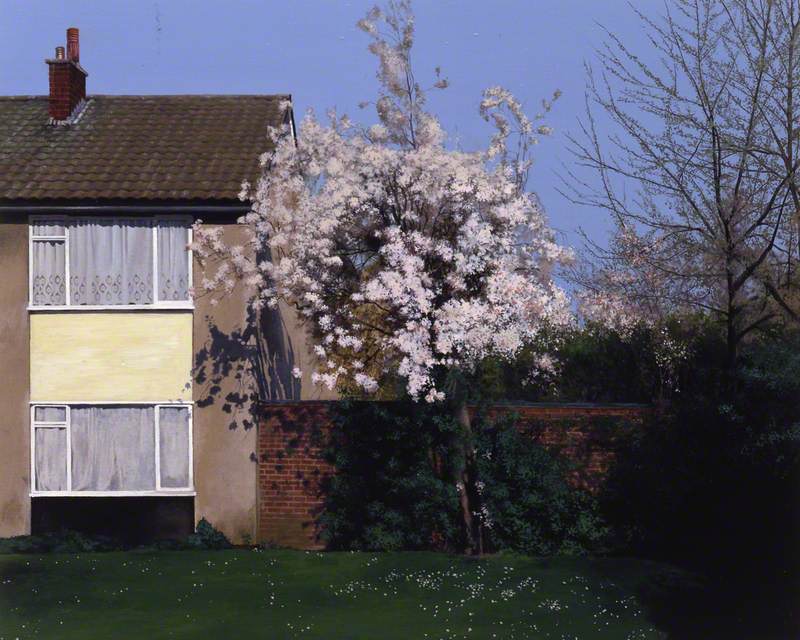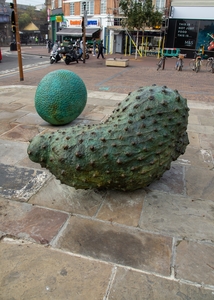'My business is to paint what I see, not what I know is there' – J. M. W. Turner
First established by the Patrons of New Art in 1984, the Turner Prize was named after the great painter J. M. W. Turner (1775–1851), who had an unfulfilled desire to set up a young artist's prize. From its origins, the Turner Prize has aimed to celebrate contemporary – and sometimes controversial – artists working in the same visionary spirit as Turner. Originally intended for British nominees under the age of 50, the award has since opened its doors to all ages and diversified its selection.
But how far has it come since the 1980s? We can explore the work of previous winners through Art UK.
Let's go back in time...
Malcolm Morley, 1984
On 10th November 1984, the London-born artist Malcolm Morley, known for his Photorealist style, was announced as the first winner of the Turner Prize, exhibiting an installation of two oil-on-canvas paintings inspired by the artist's trip to Greece.
Morley's win sparked controversy. The artist had been living in New York for the past 20 years, and members of the British art world questioned why he should receive the £10,000 prize. Other nominees that year included Richard Long, Richard Deacon and the well-known duo Gilbert & George.
Interestingly, Morley started painting while serving a prison sentence for burglary. He later attended the Royal College of Art, before moving to New York, where he remained until his death in June 2018. He is now, ironically, less well known than his shortlisted rivals for the prize.
Above you can see Morley's Mariner (1998) on Art UK, another nautical-themed oil on canvas, created a few years after his Turner Prize win.
Howard Hodgkin, 1985
In 1985, painter and printmaker Howard Hodgkin was the second artist to receive the Turner Prize for his print For Bernard Jacobsen (1979). At first glance, the print appears to be abstract, though in reality Hodgkin was depicting a night-time scene in India.
Hodgkin had a lifelong fascination with India and its art – in particular, sixteenth-century Mughal and Rajput miniatures, which he collected avidly. First visiting India in 1964, at the age of 32, the artist returned to the country each year, visiting the studios of modern Indian artists such as Bhupen Khakhar (1934–2003) and Jamini Roy (1887–1972), who inspired Hodgkin's use of colour.
Damien Hirst, 1995
Jumping ahead in time, provocateur Damien Hirst won the Turner Prize in 1995 at the age of 30, receiving £20,000 for his piece Mother and Child Divided (1993), a floor-based sculpture consisting of a dissected cow and calf preserved in formaldehyde.
Part of the 'Young British Artists' movement – a collection of artists who graduated from Goldsmiths in the 1980s and received the patronage of collector Charles Saatchi – Hirst had become one of the movement's figureheads, along with Angus Fairhurst, Sarah Lucas, Gavin Turk and Gillian Wearing (who was herself to win the Turner Prize in 1997).
That year was a controversial one for Hirst. His formaldehyde work, Away From The Flock (1994), had been vandalised at the Serpentine Gallery and another one of his works had been removed by a museum in New York, after reports emerged that visitors were vomiting at the sight of decaying animals.
As well as installations such as Mother and Child Divided, on Art UK you can see how spot works such as his Monument to the Living and the Dead (2006) continued Hirst's obsession with the theme of life and death.
Chris Ofili, 1998
Chris Ofili was awarded the Turner Prize in 1998 for his iconic painting No Woman, No Cry (1998), surprisingly making him the first painter to receive the award since Hodgkin. But like Hirst's controversial work, Ofili's painting sent shockwaves through the art world.
Named after the famous Bob Marley song, the acrylic and oil painting included elephant dung as a material – a substance that Ofili had used in previous works such as Double Captain Shit and the Legend of the Black Stars.
Most importantly, the work sparked debate for its reference to Stephen Lawrence, a young boy who had been murdered in a racially motivated attack in 1993. The highly publicised incident – brought to attention by the campaigning of his mother Doreen Lawrence – raised questions about institutional racism within the police.
Ofili's portrait of a weeping woman could be read as a contemporary and political version of a Renaissance Pietà, or Lamentation of Christ – a mother weeping over the body of her dead child. Upon closer inspection, you can see that the tears of the woman contain images of Stephen. Beneath layers of paint, the words 'RIP Stephen Lawrence' can be read.
Keith Tyson, 2002
In 2002, Keith Tyson beat other nominees Fiona Banner, Liam Gillick and Catherine Yass to the £20,000 prize, exhibiting his work, The Thinker (After Rodin), part of his series Seven Wonders of the World.
The year 2002 was possibly the most controversial for the Turner Prize. The award received critical backlash, not just from art critics, but from politicians, even members of the Royal Family. Culture Minister Kim Howells described the award as 'cold, mechanical, conceptual bullsh*t.' His comment quickly received praise from Prince Charles, who in turn claimed that the prize had 'contaminated the art establishment.' Graffiti artist Banksy also joined in on the conversation, creating his work Mind the Crap, which he stencilled onto the steps of Tate before it was hurriedly removed by cleaners.
Despite the increasing uproar around that year's selection, Tyson was praised by the judging panel for his work's 'strong visual energy' across a diverse range of media that included drawing, painting, sculpture and installation. On Art UK you can take a look at a later work by Tyson, Nature Painting (2008).
Tomma Abts, 2006
In 2006, the German-born abstract painter Tomma Abts won the Turner Prize, beating nominees Phil Collins, Mark Titchner and Rebecca Warren. Notably, she was awarded the £25,000 prize by the legendary Yoko Ono, whose speech proclaimed that London had overtaken New York as the centre of the global art world.
Nominated for her solo exhibition at Kunsthalle Basel, Switzerland, Abts exhibited a series of eleven abstract paintings. Her painterly practice does not follow a preconceived plan or idea, only a selection of materials. In the artist's own words: 'I can't really ever say what it will look like or how it will finish or what will make it work. It's a different idea or moment for each painting.'
Lubaina Himid, 2017
In 2017, artist and curator Lubaina Himid received the Turner Prize, beating Hurvin Anderson, Andrea Büttner and Rosalind Nashashibi. A member of the UK's Black Arts Movement in the 1980s, Himid's win made history – she was the first black woman to receive the award and the oldest ever winner, at the age of 63.
Allow Your Friends to Meet Your Enemies
(diptych, right and left panel) 2011
Lubaina Himid (b.1954) 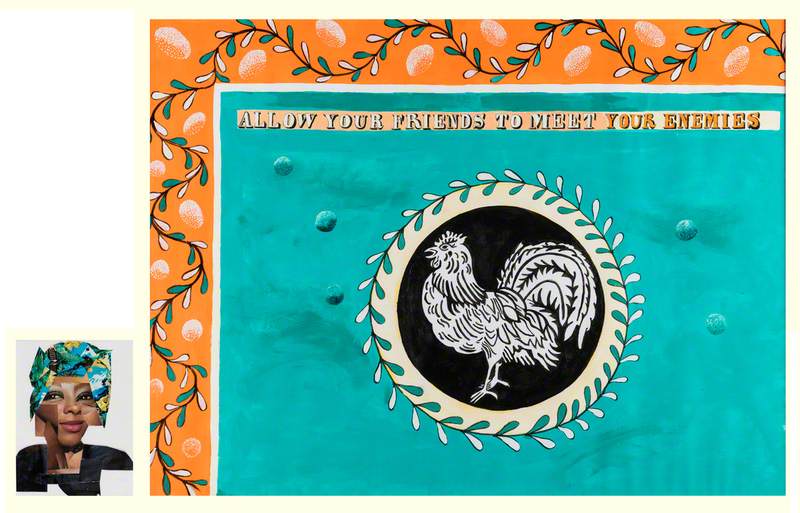
Himid's work is characteristically colourful and her subject matter is concerned with identity, race and colonialism – 'black creativity, history and identity', as Louisa Buck wrote in The Telegraph. Himid's win attracted arguably the most positive media attention the Turner Prize has ever received, with critics praising the judging panel for selecting an artist whose work has been overlooked, but which has become increasingly relevant in today's cultural and political climate.
Since this piece was originally published at the end of 2018, we've seen several more winners. 2018 saw the prize awarded to Glasgow-based artist Charlotte Prodger, whose work highlights queer identity through the medium of video shot on an iPhone. In 2019 the prize was shared between Lawrence Abu Hamdan, Helen Cammock, Tai Shani and Oscar Murillo. The 2020 prize was cancelled due to Covid-19. 2021 saw Northern Ireland's Array Collective win (you can read an interview with them here). Veronica Ryan won in 2022 and Jesse Darling in 2023.
Custard Apple (Annonaceae), Breadfruit (Moraceae), and Soursop (Annonaceae)
2021
Veronica Ryan (b.1956) 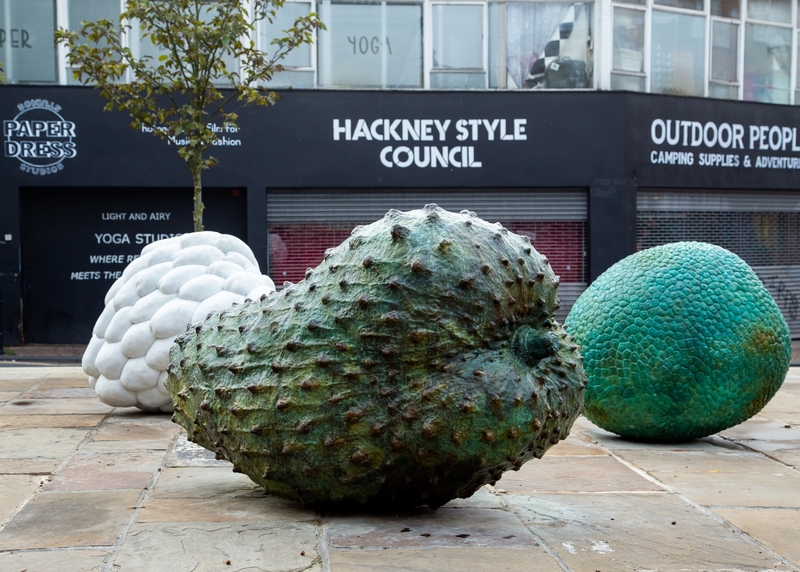
The shortlist for the 40th anniversary prize was announced in April 2024 – you can explore works by Pio Abad, Claudette Johnson, Jasleen Kaur and Delaine Le Bas on Art UK.
We're now at the end our brief Turner Prize history. Like J. M. W. Turner himself, the prize has attracted scorn and praise. Since its beginning, it has reflected contemporary culture, but has also unapologetically searched for fresh perspectives, new ways of making, and celebrates art that is challenging. What will the next forty years of the Turner Prize look like? We'll just have to wait and see...
Lydia Figes, Content Creator at Art UK
